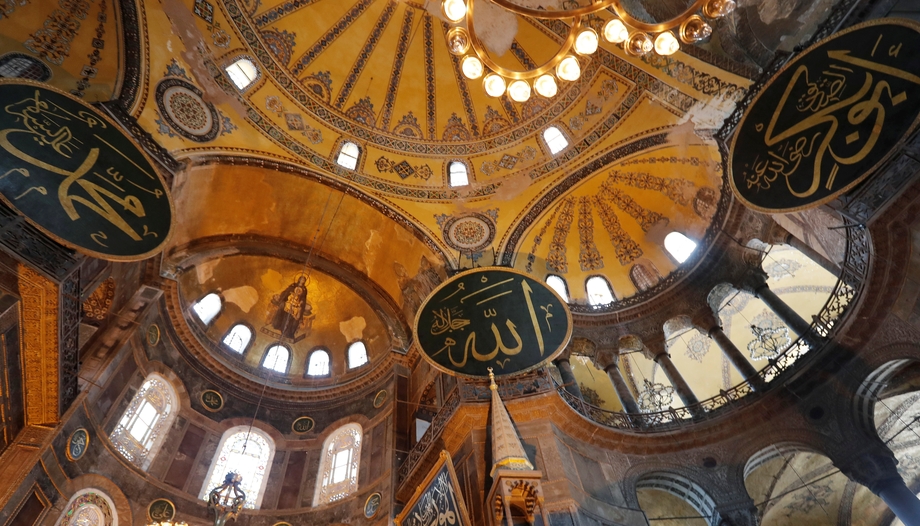 Armenia, the first Christian nation
Armenia, the first Christian nation Steven Schloeder: "With architecture we seek to express a deeper truth."
Steven Schloeder: "With architecture we seek to express a deeper truth."The city of Constantinople, founded by Emperor Constantine I the Great (280-337 AD) over the former Byzantium, became the capital of the Roman Empire after the fall of Rome in 476 AD.
Constantinople was known as the "New Rome" and remained standing until it was conquered by the Turks in 1453, which dealt a severe blow to Christianity.
The construction of Hagia Sophia
It was Emperor Justinian who, in the year 532, ordered the construction of the basilica of Hagia Sophia, which was for many years the jewel of the Eastern Roman Empire, so much so that in its interior the coronations of the Byzantine emperors were held on a circular slab known as "Omphalion" (navel of the Earth). Previously, there had been in the same location two other churches, destroyed in 404 and 532 respectively, the second as a result of a fire in the internal revolt of Nika (named after the battle cry of the rebels) between Monophysites and Christians.
A few days after the destruction of this church, Emperor Justinian decided to build a great basilica to surpass the previous one. The name given to the new temple does not refer to any saint, but in Greek Ἁγία Σοφία (Hagia Sophia) means "Sacred Wisdom".
The architects Antemius of Trales and Isidore of Miletus were in charge of designing the Hagia Sophia, and its construction was quite fast, in just five years, between 532 and 537. It is said that Justinian, upon entering its interior, said: "Solomon, I have defeated you".
No expense was spared in the construction of this great temple. In fact, the Emperor's Gate was said to be made of wood from Noah's Ark.
However, the church has had to be rebuilt several times, due to invasions and numerous earthquakes. A few years after its construction, in 558, the dome collapsed and had to be rebuilt by Isidore the Younger, nephew of one of the original architects.
The dome
The famous dome of Hagia Sophia measures more than 30 meters in diameter and rises 55 meters above the ground. It is supported by pendentives and was the largest in the world until the dome of the Florence cathedral was built in the 15th century.
The Byzantine historian Procopius of Caesarea (500-560), considered the main source of the reign of Emperor Justinian, said of the dome that "seems not to be founded on solid masonry, but to be suspended from heaven by a golden chain." The Patriarch of Constantinople Photius (820-893), for his part, affirmed: "It is like entering heaven itself with no one in the way; one is illuminated and affected by the various beauties that shine before one like stars all around".
Transformation to mosque
After the Turkish invasion in 1453 and a siege of the city that lasted 53 days, Sultan Mehmet II converted the church into a mosque, so the Pantocrator that decorated the interior of the dome was lost, as well as other mosaics and Christian references, which were covered by Islamic decoration. In addition, a mihrab (niche indicating the direction of Mecca) was built and capitals and four minarets were added. The city, since then, has been known by the name "Istanbul", which is not a Turkish word, but its origin lies in the Greek phrase "στην Πόλιv" ("sten pólin"), "to the city".
Centuries later, after the decomposition of the Ottoman Empire in 1922, Mustafa Kemal Atatürk, the first president of the Republic of Turkey, turned the mosque into a museum in 1935. However, many Islamic groups wanted Hagia Sophia to become a mosque again, despite the opposition of, among others, the Greek government or UNESCO, which declared Hagia Sophia a World Heritage Site in 1985.
Despite international opposition, in 2020 Hagia Sophia reopened for worship as a mosque. However, it can still be visited, as long as the visit does not coincide with the five daily Muslim prayers.











